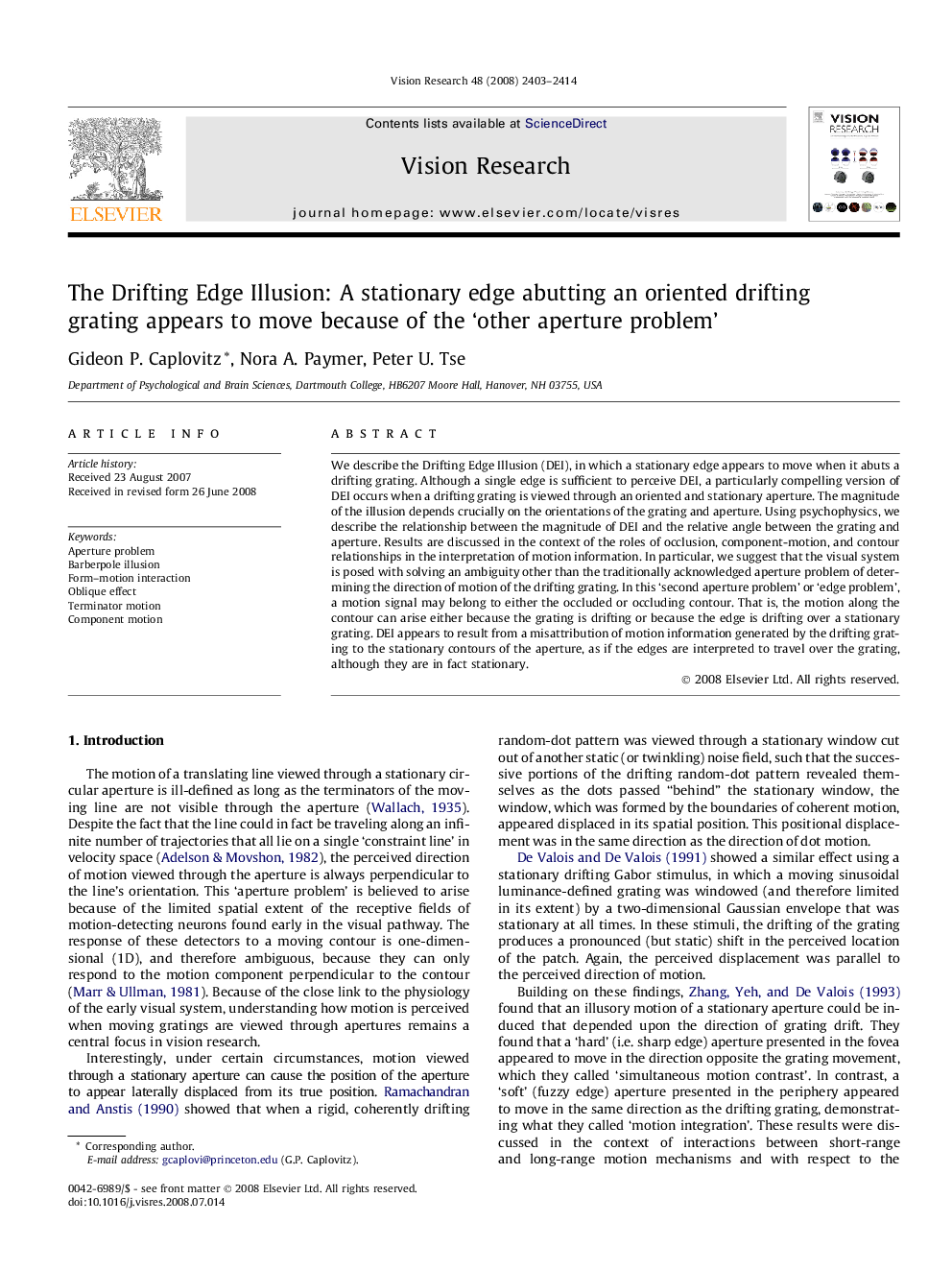| Article ID | Journal | Published Year | Pages | File Type |
|---|---|---|---|---|
| 4034946 | Vision Research | 2008 | 12 Pages |
We describe the Drifting Edge Illusion (DEI), in which a stationary edge appears to move when it abuts a drifting grating. Although a single edge is sufficient to perceive DEI, a particularly compelling version of DEI occurs when a drifting grating is viewed through an oriented and stationary aperture. The magnitude of the illusion depends crucially on the orientations of the grating and aperture. Using psychophysics, we describe the relationship between the magnitude of DEI and the relative angle between the grating and aperture. Results are discussed in the context of the roles of occlusion, component-motion, and contour relationships in the interpretation of motion information. In particular, we suggest that the visual system is posed with solving an ambiguity other than the traditionally acknowledged aperture problem of determining the direction of motion of the drifting grating. In this ‘second aperture problem’ or ‘edge problem’, a motion signal may belong to either the occluded or occluding contour. That is, the motion along the contour can arise either because the grating is drifting or because the edge is drifting over a stationary grating. DEI appears to result from a misattribution of motion information generated by the drifting grating to the stationary contours of the aperture, as if the edges are interpreted to travel over the grating, although they are in fact stationary.
